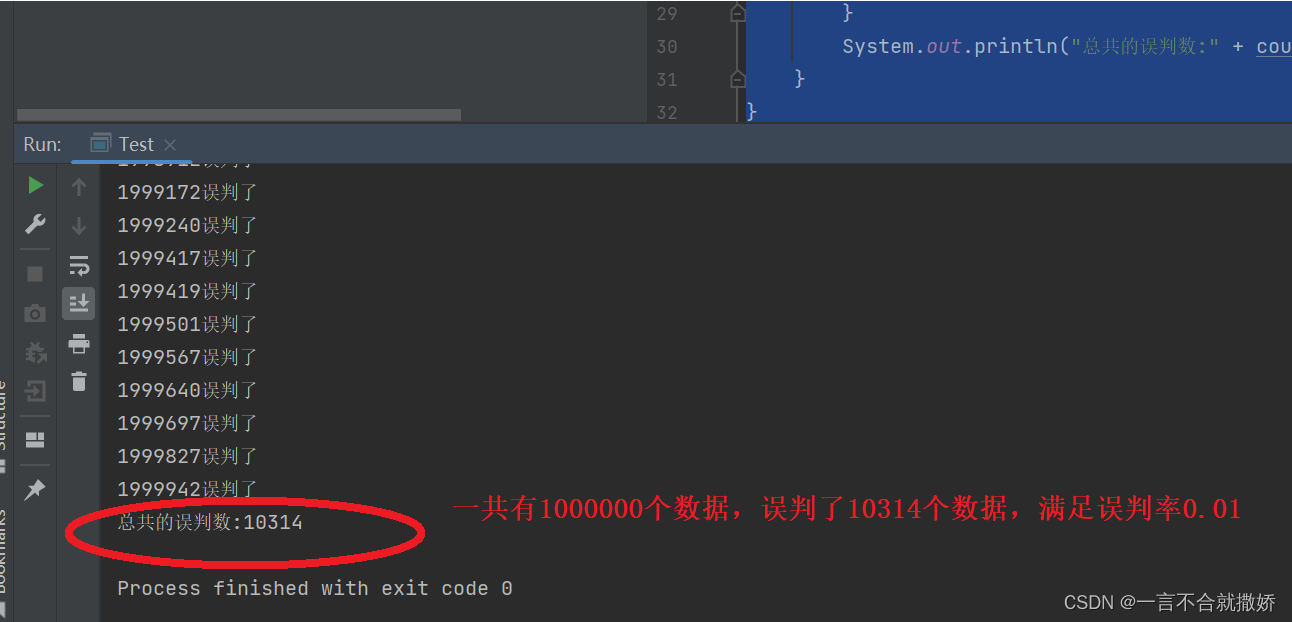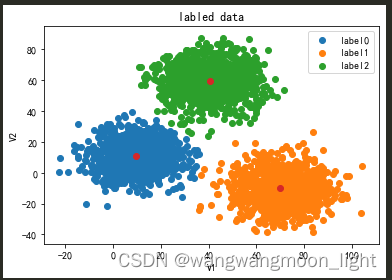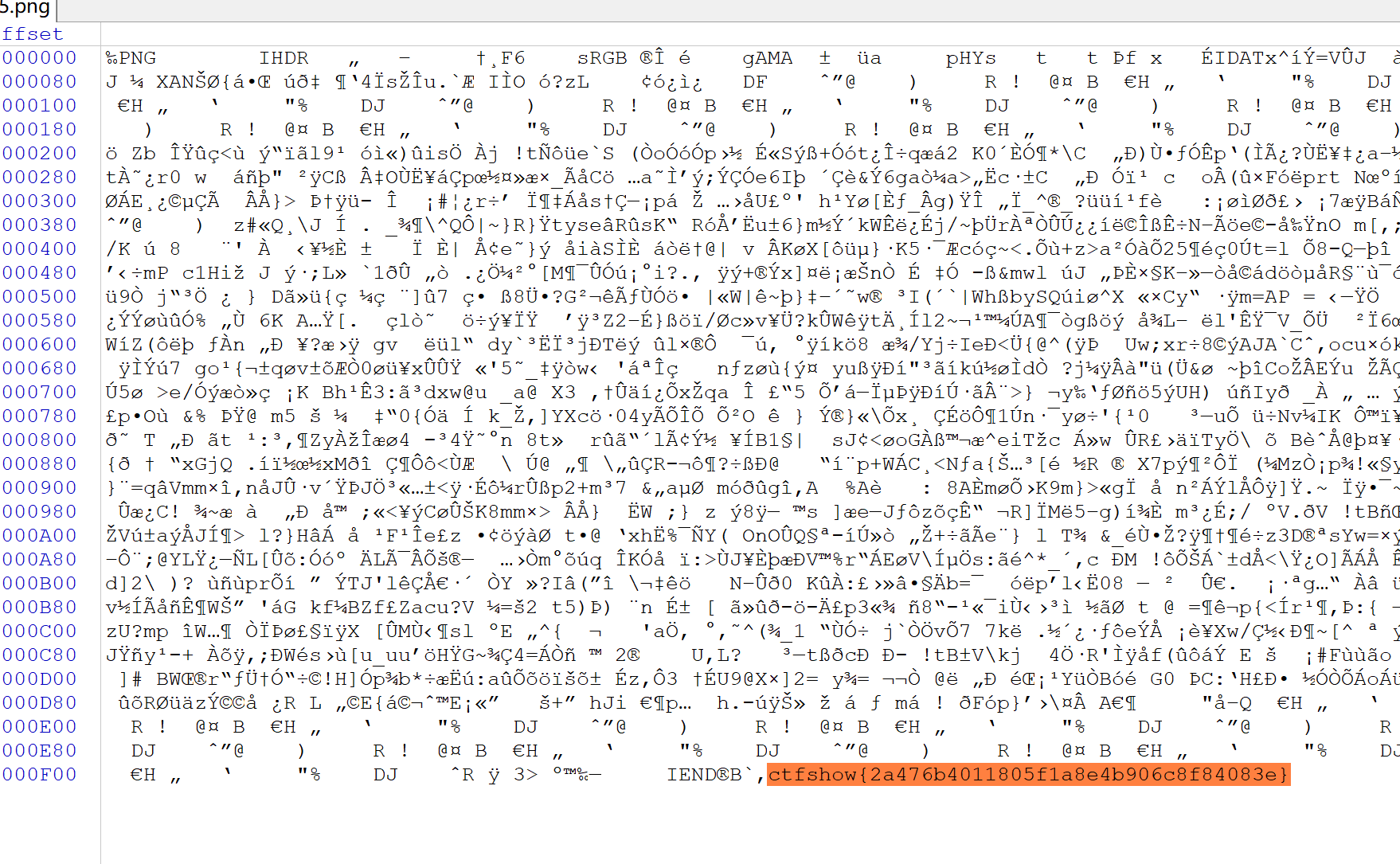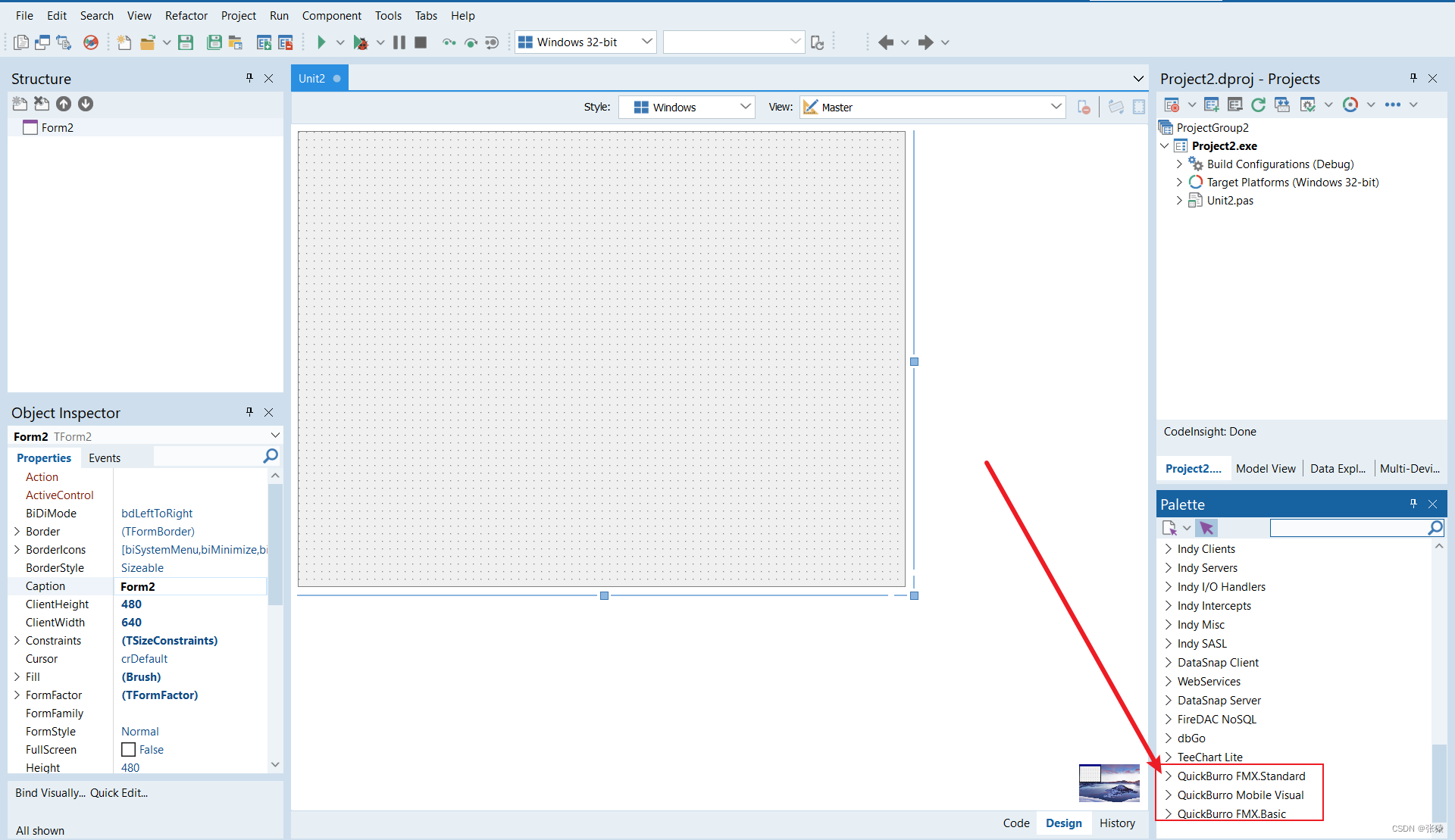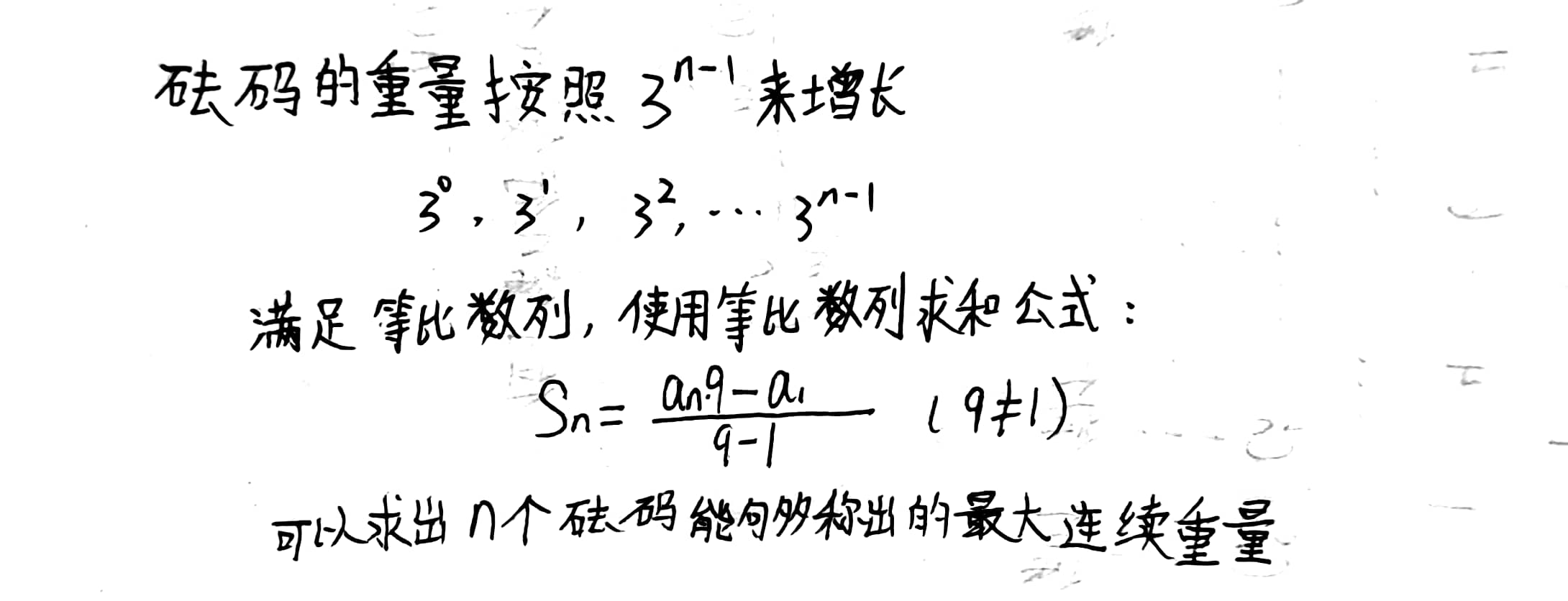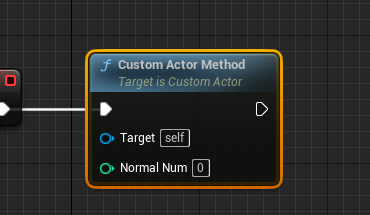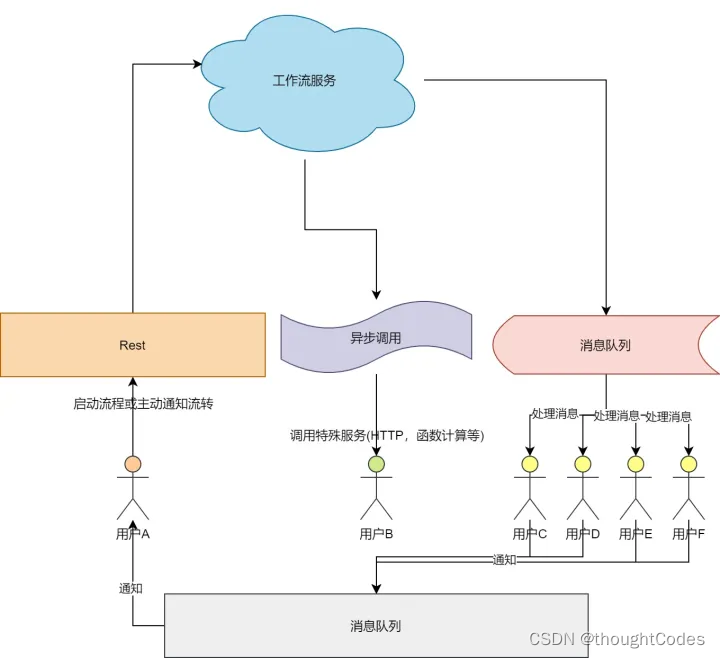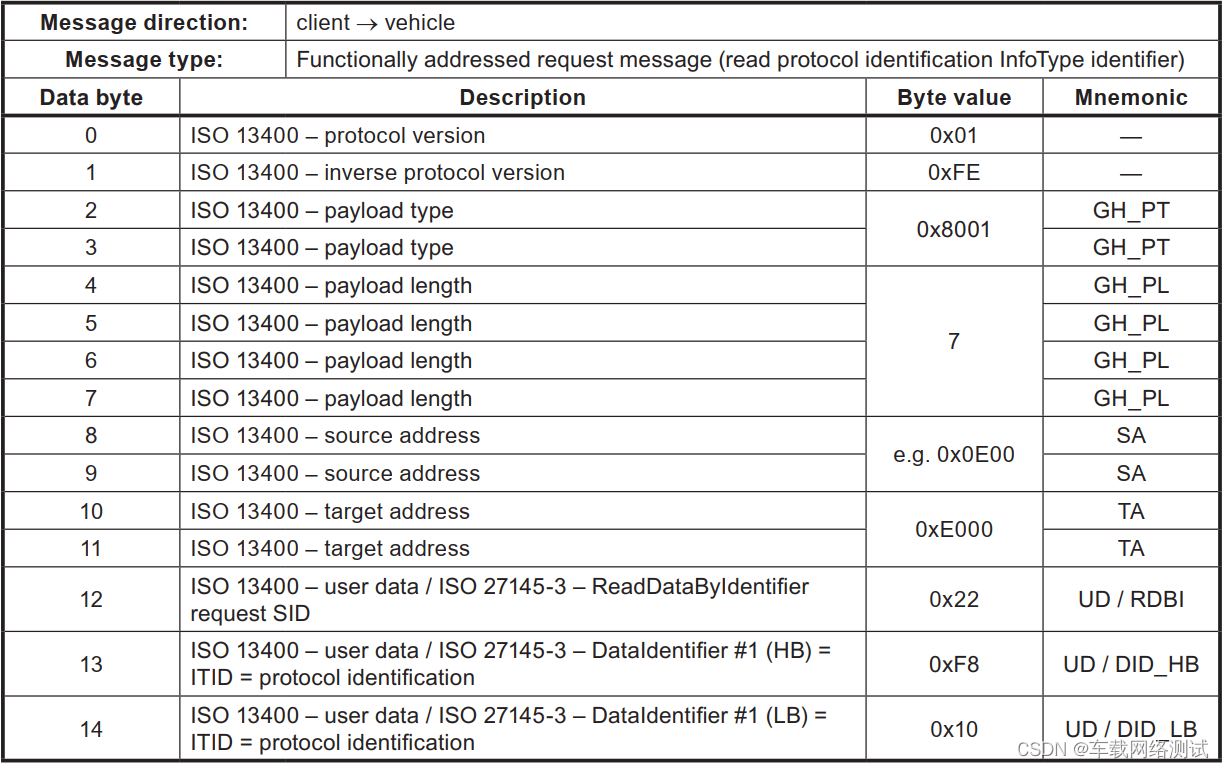这一篇我们主要来分析下Seata的AT模式的流程处理。
一、流程案例
1、案例源码
我们本地流程梳理用的是基于spring-cloud框架,注册中心是eurak,服务间调用的是feign,源码下载的是官网的(当然你如果对dubbo更熟悉,也可以使用dubbo结构的),案例地址–https://github.com/seata/seata-samples。


这个我本地的话,将其他的模块都删除了。然后启动的话,注意数据库连接信息的修改以及脚本初始化。
这个业务是一个用户账号(account)下订单(order),然后减库存(stock),整个业务的发起就是在business发起的。


2、服务器源码
然后seata服务端,我下载的1.4.2版本的源码在本地启动。

对于服务端的启动,用的是db模式

注册的话,修改为eurka

注意运行对应的数据库脚本。
二、一些前置概念的介绍
可以先再看下其官网的介绍–http://seata.io/zh-cn/docs/overview/what-is-seata.html。然后我们结合源码再来说下。
1、整个案例的TM、RM、TC业务逻辑

TC (Transaction Coordinator) - 事务协调者
维护全局和分支事务的状态,驱动全局事务提交或回滚。
TM (Transaction Manager) - 事务管理器
定义全局事务的范围:开始全局事务、提交或回滚全局事务。
RM (Resource Manager) - 资源管理器
管理分支事务处理的资源,与TC交谈以注册分支事务和报告分支事务的状态,并驱动分支事务提交或回滚。
这里主要我们需要明白TM、TC的概念,TM其实就是全局事务的发起者,TC就是协调者,例如如果全局事务需要回滚或者提交,就是TM去通知TC,然后TC再获取、调用该全局事务下的各个分支,通知他们去进行提交或回滚。
TC其实就是我们的seata服务端,如果我们要开启全局事务,通过TM(对于我们代码来说,TM也就是TransactionManager接口)发起(发起也就是调用begin方法,获取到本次分布式事务唯一全局标识xid),也就是我们在调用businessService.purchase("U100000", "C100000", 30)方法时,就会通过拦截器拦截,进行对应分布式事务的逻辑织入,然后在里面调用TC,告诉它我们要开始分布式事务了,然后TC就是在global_table添加一条记录,就是本次分布式事务的唯一标识记录:
CREATE TABLE `global_table` (
`xid` varchar(128) NOT NULL,
`transaction_id` bigint DEFAULT NULL,
`status` tinyint NOT NULL,
`application_id` varchar(64) DEFAULT NULL,
`transaction_service_group` varchar(64) DEFAULT NULL,
`transaction_name` varchar(64) DEFAULT NULL,
`timeout` int DEFAULT NULL,
`begin_time` bigint DEFAULT NULL,
`application_data` varchar(2000) DEFAULT NULL,
`gmt_create` datetime DEFAULT NULL,
`gmt_modified` datetime DEFAULT NULL,
PRIMARY KEY (`xid`),
KEY `idx_gmt_modified_status` (`gmt_modified`,`status`),
KEY `idx_transaction_id` (`transaction_id`)
) ENGINE=InnoDB DEFAULT CHARSET=utf8mb4 COLLATE=utf8mb4_0900_ai_ci;

然后TC(也就是seata服务端)将xid返回,之后就会具体来调用到业务方法,也就是purchase(...)方法的业务逻辑:
@GlobalTransactional
public void purchase(String userId, String commodityCode, int orderCount) {
stockFeignClient.deduct(commodityCode, orderCount);
orderFeignClient.create(userId, commodityCode, orderCount);
if (!validData()) {
throw new RuntimeException("账户或库存不足,执行回滚");
}
}
然后我们就会通过feign去调用stock服务以及order服务,在调用的时候,将xid加在请求头部中。
stock接受到调用后,seata就会通过拓展spring提供的HandlerInterceptor接口(具体可以去了解下这个接口)实现SeataHandlerInterceptor,从头部中获取到xid,然后绑定到当前线程中,然后去执行对应的业务。
对应的业务方法就会去操作DB,而这个时候,seata同样有个织入逻辑,也就是代理spring本身的DataSource-DataSourceProxy类,当操作数据库时,通过DataSource获取Connection时,其又会返回ConnectionProxy类来代理本身的Connection,然后在操作数据库之前、之后,添加对应的seata逻辑。例如:
1、记录undo_log表的数据,用于回滚时候的恢复重做
CREATE TABLE `undo_log` (
`id` bigint NOT NULL AUTO_INCREMENT,
`branch_id` bigint NOT NULL,
`xid` varchar(100) NOT NULL,
`context` varchar(128) NOT NULL,
`rollback_info` longblob NOT NULL,
`log_status` int NOT NULL,
`log_created` datetime NOT NULL,
`log_modified` datetime NOT NULL,
PRIMARY KEY (`id`),
UNIQUE KEY `ux_undo_log` (`xid`,`branch_id`)
) ENGINE=InnoDB AUTO_INCREMENT=147 DEFAULT CHARSET=utf8mb3;

2、通过RM(也就是ResourceManager接口)进行分支注册(调用ResourceManager接口的branchRegister方法),也就是调用TC告诉它,然后TC就会在branch_table表添加一条记录,这里的一条记录,就是一个TM对应的数据
CREATE TABLE `branch_table` (
`branch_id` bigint NOT NULL,
`xid` varchar(128) NOT NULL,
`transaction_id` bigint DEFAULT NULL,
`resource_group_id` varchar(32) DEFAULT NULL,
`resource_id` varchar(256) DEFAULT NULL,
`lock_key` varchar(128) DEFAULT NULL,
`branch_type` varchar(8) DEFAULT NULL,
`status` tinyint DEFAULT NULL,
`client_id` varchar(64) DEFAULT NULL,
`application_data` varchar(2000) DEFAULT NULL,
`gmt_create` datetime DEFAULT NULL,
`gmt_modified` datetime DEFAULT NULL,
PRIMARY KEY (`branch_id`),
KEY `idx_xid` (`xid`)
) ENGINE=InnoDB DEFAULT CHARSET=utf8mb4 COLLATE=utf8mb4_0900_ai_ci;

然后当purchase(String userId, String commodityCode, int orderCount)方法调用order、stock成功完成后,这个时候就会在进入到TM也就是对应的拦截器逻辑中,如果成功执行分布式事务提交操作,失败就会捕获到异常,进行全局事务的回滚操作。例如TM调用TC告诉它完成分布式事务的提交,然后TC就会通过xid获取到当前事务下有几个分支,也就是对应RM完成提交(ResourceManager的branchCommit方法),这个就是整个seata定义分布式事务的基本逻辑。
2、TM(TransactionManager)
public interface TransactionManager {
/**
* 开启一个全局事务(也就是调用),返回xid,也就是本次全局事务的标识
*/
String begin(String applicationId, String transactionServiceGroup, String name, int timeout)
throws TransactionException;
/**
* Global commit.
*
* @param xid XID of the global transaction.
* @return Status of the global transaction after committing.
* @throws TransactionException Any exception that fails this will be wrapped with TransactionException and thrown
* out.
*/
GlobalStatus commit(String xid) throws TransactionException;
/**
* Global rollback.
*
* @param xid XID of the global transaction
* @return Status of the global transaction after rollbacking.
* @throws TransactionException Any exception that fails this will be wrapped with TransactionException and thrown
* out.
*/
GlobalStatus rollback(String xid) throws TransactionException;
.........
}
3、SeataHandlerInterceptor
public class SeataHandlerInterceptor implements HandlerInterceptor {
private static final Logger log = LoggerFactory
.getLogger(SeataHandlerInterceptor.class);
/**
* 从头部中获取xid,绑定到当前线程
**/
@Override
public boolean preHandle(HttpServletRequest request, HttpServletResponse response,
Object handler) {
String xid = RootContext.getXID();
//public static final String KEY_XID = "TX_XID";
String rpcXid = request.getHeader(RootContext.KEY_XID);
if (log.isDebugEnabled()) {
log.debug("xid in RootContext {} xid in RpcContext {}", xid, rpcXid);
}
if (xid == null && rpcXid != null) {
RootContext.bind(rpcXid);
if (log.isDebugEnabled()) {
log.debug("bind {} to RootContext", rpcXid);
}
}
return true;
}
/**
* 业务执行完后,删除
**/
@Override
public void afterCompletion(HttpServletRequest request, HttpServletResponse response,
Object handler, Exception e) {
String rpcXid = request.getHeader(RootContext.KEY_XID);
if (StringUtils.isEmpty(rpcXid)) {
return;
}
String unbindXid = RootContext.unbind();
if (log.isDebugEnabled()) {
log.debug("unbind {} from RootContext", unbindXid);
}
if (!rpcXid.equalsIgnoreCase(unbindXid)) {
log.warn("xid in change during RPC from {} to {}", rpcXid, unbindXid);
if (unbindXid != null) {
RootContext.bind(unbindXid);
log.warn("bind {} back to RootContext", unbindXid);
}
}
}
}
4、RM(ResourceManager)

三、TM相关流程源码
我们上面简单介绍了seata分布式事务的简单流程,下面我们就来具体分析下源码的流转。将上面的各个应用启动后,我们调用http://localhost:8084/purchase/commit,正式执行我们的业务流程。
1、拦截对应的使用了全局事务的方法
我们在purchase(...)方法使用的@GlobalTransactional注解,就会有对应的拦截器来解析对应的逻辑增强,加入对应的全局事务。

如果没有对应全局事务的标签,就不处理,直接通过methodInvocation.proceed()执行对应的方法。我们这里是有全局事务的,就通过handleGlobalTransaction(methodInvocation, globalTransactionalAnnotation)来开始对应的逻辑处理。
2、处理全局事务
Object handleGlobalTransaction(final MethodInvocation methodInvocation,
final GlobalTransactional globalTrxAnno) throws Throwable {
boolean succeed = true;
try {
return transactionalTemplate.execute(new TransactionalExecutor() {
@Override
public Object execute() throws Throwable {
return methodInvocation.proceed();
}
.......
@Override
public TransactionInfo getTransactionInfo() {
// reset the value of timeout
int timeout = globalTrxAnno.timeoutMills();
if (timeout <= 0 || timeout == DEFAULT_GLOBAL_TRANSACTION_TIMEOUT) {
timeout = defaultGlobalTransactionTimeout;
}
// 这个是本次事务的对应信息、例如传播级别、超时时间
TransactionInfo transactionInfo = new TransactionInfo();
transactionInfo.setTimeOut(timeout);
transactionInfo.setName(name());
transactionInfo.setPropagation(globalTrxAnno.propagation());
transactionInfo.setLockRetryInternal(globalTrxAnno.lockRetryInternal());
transactionInfo.setLockRetryTimes(globalTrxAnno.lockRetryTimes());
.........
return transactionInfo;
}
});
} catch (TransactionalExecutor.ExecutionException e) {
.........
} finally {
if (degradeCheck) {
EVENT_BUS.post(new DegradeCheckEvent(succeed));
}
}
}
这里的逻辑主要是给到TransactionalTemplate来处理对应的逻辑。
3、全局事务的整个流程逻辑
public class TransactionalTemplate {
..........
public Object execute(TransactionalExecutor business) throws Throwable {
// 1. Get transactionInfo
TransactionInfo txInfo = business.getTransactionInfo();
if (txInfo == null) {
throw new ShouldNeverHappenException("transactionInfo does not exist");
}
// 1.1 Get current transaction, if not null, the tx role is 'GlobalTransactionRole.Participant'.
GlobalTransaction tx = GlobalTransactionContext.getCurrent();
// 1.2 Handle the transaction propagation.
Propagation propagation = txInfo.getPropagation();
SuspendedResourcesHolder suspendedResourcesHolder = null;
try {
switch (propagation) {
case NOT_SUPPORTED:
// If transaction is existing, suspend it.
if (existingTransaction(tx)) {
suspendedResourcesHolder = tx.suspend();
}
// Execute without transaction and return.
return business.execute();
case REQUIRES_NEW:
// If transaction is existing, suspend it, and then begin new transaction.
if (existingTransaction(tx)) {
suspendedResourcesHolder = tx.suspend();
tx = GlobalTransactionContext.createNew();
}
// Continue and execute with new transaction
break;
............
default:
throw new TransactionException("Not Supported Propagation:" + propagation);
}
// 1.3 If null, create new transaction with role 'GlobalTransactionRole.Launcher'.
if (tx == null) {
tx = GlobalTransactionContext.createNew();
}
// set current tx config to holder
GlobalLockConfig previousConfig = replaceGlobalLockConfig(txInfo);
try {
..........
return rs;
} finally {
//5. clear
resumeGlobalLockConfig(previousConfig);
triggerAfterCompletion();
cleanUp();
}
} finally {
// If the transaction is suspended, resume it.
if (suspendedResourcesHolder != null) {
tx.resume(suspendedResourcesHolder);
}
}
}
这里其实主要分为两部分:
一部分是分布式事务其本身也是一个事务,所以前面的switch (propagation)里面的逻辑,就是遵循spring本身的事务传播机制。例如如果是NOT_SUPPORTED,其不需要事务,就会将原来的事务挂起,然后直接执行对应的业务,而如果是REQUIRES_NEW的话,其就需要先将原来的事务挂起,再开启一个新事务来继续处理往下的逻辑。
另一部分就是具体的分布式事务的处理了。
// 1.3 If null, create new transaction with role 'GlobalTransactionRole.Launcher'.
if (tx == null) {
tx = GlobalTransactionContext.createNew();
}
// set current tx config to holder
GlobalLockConfig previousConfig = replaceGlobalLockConfig(txInfo);
try {
// 2. If the tx role is 'GlobalTransactionRole.Launcher', send the request of beginTransaction to TC,
// else do nothing. Of course, the hooks will still be triggered.
beginTransaction(txInfo, tx);
Object rs;
try {
// Do Your Business
rs = business.execute();
} catch (Throwable ex) {
// 3. The needed business exception to rollback.
completeTransactionAfterThrowing(txInfo, tx, ex);
throw ex;
}
// 4. everything is fine, commit.
commitTransaction(tx);
return rs;
} finally {
//5. clear
resumeGlobalLockConfig(previousConfig);
triggerAfterCompletion();
cleanUp();
}
} finally {
// If the transaction is suspended, resume it.
if (suspendedResourcesHolder != null) {
tx.resume(suspendedResourcesHolder);
}
}
1、获取DefaultGlobalTransaction
这里首先就是通过GlobalTransactionContext.createNew()获取DefaultGlobalTransaction
public static GlobalTransaction createNew() {
return new DefaultGlobalTransaction();
}
DefaultGlobalTransaction() {
this(null, GlobalStatus.UnKnown, GlobalTransactionRole.Launcher);
}
/**
* Instantiates a new Default global transaction.
*
* @param xid the xid
* @param status the status
* @param role the role
*/
DefaultGlobalTransaction(String xid, GlobalStatus status, GlobalTransactionRole role) {
this.transactionManager = TransactionManagerHolder.get();
this.xid = xid;
this.status = status;
this.role = role;
}
这个类里面可以获取到TransactionManager事务管理器,也就是TM,transactionManager是单例模式创建的。
2、开启事务(调用TC获取xid)
private void beginTransaction(TransactionInfo txInfo, GlobalTransaction tx) throws TransactionalExecutor.ExecutionException {
try {
triggerBeforeBegin();
tx.begin(txInfo.getTimeOut(), txInfo.getName());
triggerAfterBegin();
} catch (TransactionException txe) {
throw new TransactionalExecutor.ExecutionException(tx, txe,
TransactionalExecutor.Code.BeginFailure);
}
}
然后我们会开启全局事务的流程,也就是首先获取xid。本次全局事务的状态设置为GlobalStatus.Begin,然后将xid绑定到当前线程上面。
public void begin(int timeout, String name) throws TransactionException {
if (role != GlobalTransactionRole.Launcher) {
assertXIDNotNull();
........
return;
}
assertXIDNull();
String currentXid = RootContext.getXID();
if (currentXid != null) {
throw new IllegalStateException("Global transaction already exists," +
" can't begin a new global transaction, currentXid = " + currentXid);
}
xid = transactionManager.begin(null, null, name, timeout);
status = GlobalStatus.Begin;
RootContext.bind(xid);
}
3、执行业务(成功则提交、失败则回滚)
我们获取到xid开始全局事务后,就执行我们的业务。
beginTransaction(txInfo, tx);
Object rs;
try {
// Do Your Business
rs = business.execute();
} catch (Throwable ex) {
// 3. The needed business exception to rollback.
completeTransactionAfterThrowing(txInfo, tx, ex);
throw ex;
}
// 4. everything is fine, commit.
commitTransaction(tx);
4、执行成功TM全局事务提交
private void commitTransaction(GlobalTransaction tx) throws TransactionalExecutor.ExecutionException {
try {
triggerBeforeCommit();
tx.commit();
triggerAfterCommit();
} catch (TransactionException txe) {
// 4.1 Failed to commit
throw new TransactionalExecutor.ExecutionException(tx, txe,
TransactionalExecutor.Code.CommitFailure);
}
}
public void commit() throws TransactionException {
if (role == GlobalTransactionRole.Participant) {
// Participant has no responsibility of committing
return;
}
assertXIDNotNull();
int retry = COMMIT_RETRY_COUNT <= 0 ? DEFAULT_TM_COMMIT_RETRY_COUNT : COMMIT_RETRY_COUNT;
try {
while (retry > 0) {
try {
status = transactionManager.commit(xid);
break;
} catch (Throwable ex) {
LOGGER.error("Failed to report global commit [{}],Retry Countdown: {}, reason: {}", this.getXid(), retry, ex.getMessage());
retry--;
if (retry == 0) {
throw new TransactionException("Failed to report global commit", ex);
}
}
}
} finally {
if (xid.equals(RootContext.getXID())) {
suspend();
}
}
}
这里我们可以看到当业务正常完成后,其会通过TM(TransactionManager)去提交事务,也就是调TC提交本次全局事务,让TC去通知各个RM本次事务已正常完成。
public GlobalStatus commit(String xid) throws TransactionException {
GlobalCommitRequest globalCommit = new GlobalCommitRequest();
globalCommit.setXid(xid);
GlobalCommitResponse response = (GlobalCommitResponse) syncCall(globalCommit);
return response.getGlobalStatus();
}
5、执行失败TM全局事务回滚
private void rollbackTransaction(GlobalTransaction tx, Throwable originalException) throws TransactionException, TransactionalExecutor.ExecutionException {
triggerBeforeRollback();
tx.rollback();
triggerAfterRollback();
// 3.1 Successfully rolled back
throw new TransactionalExecutor.ExecutionException(tx, GlobalStatus.RollbackRetrying.equals(tx.getLocalStatus())
? TransactionalExecutor.Code.RollbackRetrying : TransactionalExecutor.Code.RollbackDone, originalException);
}
public void rollback() throws TransactionException {
if (role == GlobalTransactionRole.Participant) {
return;
}
assertXIDNotNull();
int retry = ROLLBACK_RETRY_COUNT <= 0 ? DEFAULT_TM_ROLLBACK_RETRY_COUNT : ROLLBACK_RETRY_COUNT;
try {
while (retry > 0) {
try {
status = transactionManager.rollback(xid);
break;
} catch (Throwable ex) {
LOGGER.error("Failed to report global rollback [{}],Retry Countdown: {}, reason: {}", this.getXid(), retry, ex.getMessage());
retry--;
if (retry == 0) {
throw new TransactionException("Failed to report global rollback", ex);
}
}
}
} finally {
if (xid.equals(RootContext.getXID())) {
suspend();
}
}
}
这个与提交一样的逻辑,只是这里调用的是TM的回滚接口。
四、RM相关流程源码

我们再回到这张图片,以及对应的方法调用:
@GlobalTransactional
public void purchase(String userId, String commodityCode, int orderCount) {
stockFeignClient.deduct(commodityCode, orderCount);
orderFeignClient.create(userId, commodityCode, orderCount);
if (!validData()) {
throw new RuntimeException("账户或库存不足,执行回滚");
}
}
我们前面梳理了,TM开启事务主要是通过拦截器在调用purchase(...)进行对应全局事务开始处理,然后在purchase(...)完成后,再通过拦截器来解析TM的提交或者回滚。然后RM的逻辑有两个,一个是在purchase(...)方法通过feign调用stock、order是,其的处理,另一个是TC来解析全局事务提交、或者回滚的调用。
1、purchase业务方法调用stockFeignClient.deduct
@FeignClient(name = "stock-service", url = "127.0.0.1:8081")
public interface StockFeignClient {
@GetMapping("/deduct")
void deduct(@RequestParam("commodityCode") String commodityCode, @RequestParam("count") Integer count);
}
这里是通过feign去调用到stock服务,然后seata在这里做了个处理,也是代理模式,代理本身的feignClient,然后增强,也就是将xid加到header里面:
public class SeataFeignClient implements Client {
private final Client delegate;
private final BeanFactory beanFactory;
private static final int MAP_SIZE = 16;
SeataFeignClient(BeanFactory beanFactory) {
this.beanFactory = beanFactory;
this.delegate = new Client.Default(null, null);
}
.........
@Override
public Response execute(Request request, Request.Options options) throws IOException {
Request modifiedRequest = getModifyRequest(request);
return this.delegate.execute(modifiedRequest, options);
}
private Request getModifyRequest(Request request) {
String xid = RootContext.getXID();
.........
Map<String, Collection<String>> headers = new HashMap<>(MAP_SIZE);
headers.putAll(request.headers());
List<String> fescarXid = new ArrayList<>();
fescarXid.add(xid);
headers.put(RootContext.KEY_XID, fescarXid);
return Request.create(request.method(), request.url(), headers, request.body(),
request.charset());
}
}
2、stock服务取xid(SeataHandlerInterceptor)
在business服务调用时添加了xid到同步中,在stock肯定会取出来,其的获取也是拓展spring的HandlerInterceptor接口。

public class SeataHandlerInterceptor implements HandlerInterceptor {
private static final Logger log = LoggerFactory
.getLogger(SeataHandlerInterceptor.class);
@Override
public boolean preHandle(HttpServletRequest request, HttpServletResponse response,
Object handler) {
String xid = RootContext.getXID();
........
if (xid == null && rpcXid != null) {
RootContext.bind(rpcXid);
}
return true;
}
@Override
public void afterCompletion(HttpServletRequest request, HttpServletResponse response,
Object handler, Exception e) {
String rpcXid = request.getHeader(RootContext.KEY_XID);
if (StringUtils.isEmpty(rpcXid)) {
return;
}
String unbindXid = RootContext.unbind();
if (!rpcXid.equalsIgnoreCase(unbindXid)) {
if (unbindXid != null) {
RootContext.bind(unbindXid);
}
}
}
}
这里就是在DispatcherServlet调用实际Controller业务方法其重头部中获取然后绑定到当前线程中,在业务方法完成后再unbind。在这里处理后,就会进入到controller的业务逻辑中。
3、stock的DB相关逻辑(主要织入分支注册、undo日志记录)

然后就就会进行DB操作,同时我们可以看到,Seata的在这里也是通过代理模式处理了DataSource。
public class DataSourceProxy extends AbstractDataSourceProxy implements Resource {
..........
@Override
public ConnectionProxy getConnection() throws SQLException {
Connection targetConnection = targetDataSource.getConnection();
return new ConnectionProxy(this, targetConnection);
}
主要的逻辑增强处理就是在ConnectionProxy中。并且seata的处理不单是这个代理了,还有PreparedStatement这些,我们在这里就不是梳理其的具体流转了,有点绕。我们自己看seata在进行DB操作前做了对应的哪些处理。
1)、判断处理是否设置自动提交
public T doExecute(Object... args) throws Throwable {
AbstractConnectionProxy connectionProxy = statementProxy.getConnectionProxy();
if (connectionProxy.getAutoCommit()) {
return executeAutoCommitTrue(args);
} else {
return executeAutoCommitFalse(args);
}
}
在执行前,判断是否为自动提交,如果为自动提交,是的话调用executeAutoCommitTrue,这个方法主要是将自动提交设置为不自动提交,然后调用executeAutoCommitFalse(args),再进行提交connectionProxy.commit():
protected T executeAutoCommitTrue(Object[] args) throws Throwable {
ConnectionProxy connectionProxy = statementProxy.getConnectionProxy();
try {
connectionProxy.changeAutoCommit();
return new LockRetryPolicy(connectionProxy).execute(() -> {
T result = executeAutoCommitFalse(args);
connectionProxy.commit();
return result;
});
} catch (Exception e) {
if (!LockRetryPolicy.isLockRetryPolicyBranchRollbackOnConflict()) {
connectionProxy.getTargetConnection().rollback();
}
throw e;
} finally {
connectionProxy.getContext().reset();
connectionProxy.setAutoCommit(true);
}
}
2)、处理业务执行
protected T executeAutoCommitFalse(Object[] args) throws Exception {
if (!JdbcConstants.MYSQL.equalsIgnoreCase(getDbType()) && isMultiPk()) {
throw new NotSupportYetException("multi pk only support mysql!");
}
TableRecords beforeImage = beforeImage();
T result = statementCallback.execute(statementProxy.getTargetStatement(), args);
TableRecords afterImage = afterImage(beforeImage);
prepareUndoLog(beforeImage, afterImage);
return result;
}
这个我们可以看到逻辑,在执行业务sql前获取修改前的逻辑,执行后以及获取修改后的数据,保存到undo日志
protected void prepareUndoLog(TableRecords beforeImage, TableRecords afterImage) throws SQLException {
.........
TableRecords lockKeyRecords = sqlRecognizer.getSQLType() == SQLType.DELETE ? beforeImage : afterImage;
String lockKeys = buildLockKey(lockKeyRecords);
if (null != lockKeys) {
connectionProxy.appendLockKey(lockKeys);
SQLUndoLog sqlUndoLog = buildUndoItem(beforeImage, afterImage);
connectionProxy.appendUndoLog(sqlUndoLog);
}
}

3)、DB提交(RM分支事务注册、undo数据记录)
private void processGlobalTransactionCommit() throws SQLException {
try {
register();
} catch (TransactionException e) {
recognizeLockKeyConflictException(e, context.buildLockKeys());
}
try {
UndoLogManagerFactory.getUndoLogManager(this.getDbType()).flushUndoLogs(this);
targetConnection.commit();
} catch (Throwable ex) {
LOGGER.error("process connectionProxy commit error: {}", ex.getMessage(), ex);
report(false);
throw new SQLException(ex);
}
if (IS_REPORT_SUCCESS_ENABLE) {
report(true);
}
context.reset();
}
在提交的时候主要有四个处理:
1、作为RM向TC注册分支事务
private void register() throws TransactionException {
if (!context.hasUndoLog() || !context.hasLockKey()) {
return;
}
Long branchId = DefaultResourceManager.get().branchRegister(BranchType.AT, getDataSourceProxy().getResourceId(),
null, context.getXid(), null, context.buildLockKeys());
context.setBranchId(branchId);
}
public Long branchRegister(BranchType branchType, String resourceId, String clientId, String xid, String applicationData, String lockKeys) throws TransactionException {
try {
BranchRegisterRequest request = new BranchRegisterRequest();
request.setXid(xid);
request.setLockKey(lockKeys);
request.setResourceId(resourceId);
request.setBranchType(branchType);
request.setApplicationData(applicationData);
BranchRegisterResponse response = (BranchRegisterResponse) RmNettyRemotingClient.getInstance().sendSyncRequest(request);
if (response.getResultCode() == ResultCode.Failed) {
throw new RmTransactionException(response.getTransactionExceptionCode(), String.format("Response[ %s ]", response.getMsg()));
}
return response.getBranchId();
} catch (TimeoutException toe) {
throw new RmTransactionException(TransactionExceptionCode.IO, "RPC Timeout", toe);
} catch (RuntimeException rex) {
throw new RmTransactionException(TransactionExceptionCode.BranchRegisterFailed, "Runtime", rex);
}
}
这个就是告诉TC直接是本次全局事务的一个分支事务。然后TC收到后就会在branch_table中添加一条记录。
2、undo表记录插入
public void flushUndoLogs(ConnectionProxy cp) throws SQLException {
ConnectionContext connectionContext = cp.getContext();
if (!connectionContext.hasUndoLog()) {
return;
}
String xid = connectionContext.getXid();
long branchId = connectionContext.getBranchId();
BranchUndoLog branchUndoLog = new BranchUndoLog();
branchUndoLog.setXid(xid);
branchUndoLog.setBranchId(branchId);
branchUndoLog.setSqlUndoLogs(connectionContext.getUndoItems());
UndoLogParser parser = UndoLogParserFactory.getInstance();
byte[] undoLogContent = parser.encode(branchUndoLog);
.........
insertUndoLogWithNormal(xid, branchId, buildContext(parser.getName(), compressorType), undoLogContent, cp.getTargetConnection());
}
protected void insertUndoLogWithNormal(String xid, long branchId, String rollbackCtx, byte[] undoLogContent,
Connection conn) throws SQLException {
insertUndoLog(xid, branchId, rollbackCtx, undoLogContent, State.Normal, conn);
}
private void insertUndoLog(String xid, long branchId, String rollbackCtx, byte[] undoLogContent,
State state, Connection conn) throws SQLException {
try (PreparedStatement pst = conn.prepareStatement(INSERT_UNDO_LOG_SQL)) {
pst.setLong(1, branchId);
pst.setString(2, xid);
pst.setString(3, rollbackCtx);
pst.setBytes(4, undoLogContent);
pst.setInt(5, state.getValue());
pst.executeUpdate();
} catch (Exception e) {
if (!(e instanceof SQLException)) {
e = new SQLException(e);
}
throw (SQLException) e;
}
}
3、通过Connection正式进行本地事务提交
4、作为RM向TC进行本地事务完成状态的提交
private void report(boolean commitDone) throws SQLException {
if (context.getBranchId() == null) {
return;
}
int retry = REPORT_RETRY_COUNT;
while (retry > 0) {
try {
DefaultResourceManager.get().branchReport(BranchType.AT, context.getXid(), context.getBranchId(),
commitDone ? BranchStatus.PhaseOne_Done : BranchStatus.PhaseOne_Failed, null);
return;
} catch (Throwable ex) {
retry--;
if (retry == 0) {
throw new SQLException("Failed to report branch status " + commitDone, ex);
}
}
}
}
可以看到,我们如果完成的话,就报告为BranchStatus.PhaseOne_Done,也就是本地分支事务完成提交,如果失败就是BranchStatus.PhaseOne_Failed。
4、本地分支事务的提交或回滚
如果全局事务的各个分支正常完成,然后TM就会向TC进行全局事务的提交,然后TC就通过xid获取当前全局事务下面的各个分支,让它们进行提交,回滚从流程上来说是类似的,所以我们本次就梳理commit的流程。
1、提交
seata在调用是使用的nio,我们直接进入到具体的处理。

这里是我们RM被调用提交:

public BranchStatus branchCommit(BranchType branchType, String xid, long branchId, String resourceId,
String applicationData) throws TransactionException {
return asyncWorker.branchCommit(xid, branchId, resourceId);
}
可以看到其在ResourceManager中是异步处理的。
public BranchStatus branchCommit(String xid, long branchId, String resourceId) {
Phase2Context context = new Phase2Context(xid, branchId, resourceId);
addToCommitQueue(context);
return BranchStatus.PhaseTwo_Committed;
}
添加到异步提交队列后就直接返回BranchStatus.PhaseTwo_Committed,也就是二阶段提交完成。
那关于第二阶段完成的具体处理是什么呢?我们知道具体数据库的数据其实在第一阶段以及做了修改(并做了undo备份),所以二阶段的处理,不用处理数据部分了,只要将次xid对应的undo记录删除就可以了。
private void doBranchCommit() {
............
groupedContexts.forEach(this::dealWithGroupedContexts);
}
private void dealWithGroupedContexts(String resourceId, List<Phase2Context> contexts) {
...........
Connection conn;
try {
conn = dataSourceProxy.getPlainConnection();
} catch (SQLException sqle) {
return;
}
UndoLogManager undoLogManager = UndoLogManagerFactory.getUndoLogManager(dataSourceProxy.getDbType());
..........
splitByLimit.forEach(partition -> deleteUndoLog(conn, undoLogManager, partition));
}
private void deleteUndoLog(Connection conn, UndoLogManager undoLogManager, List<Phase2Context> contexts) {
Set<String> xids = new LinkedHashSet<>(contexts.size());
.............
try {
undoLogManager.batchDeleteUndoLog(xids, branchIds, conn);
if (!conn.getAutoCommit()) {
conn.commit();
}
} catch (SQLException e) {
LOGGER.error("Failed to batch delete undo log", e);
try {
conn.rollback();
} catch (SQLException rollbackEx) {
LOGGER.error("Failed to rollback JDBC resource after deleting undo log failed", rollbackEx);
}
} finally {
try {
conn.close();
} catch (SQLException closeEx) {
LOGGER.error("Failed to close JDBC resource after deleting undo log", closeEx);
}
}
}
2、回滚
关于回滚,其主要就是根据undo查询恢复数据的提交
public BranchStatus branchCommit(BranchType branchType, String xid, long branchId, String resourceId,
String applicationData) throws TransactionException {
return asyncWorker.branchCommit(xid, branchId, resourceId);
}
@Override
public BranchStatus branchRollback(BranchType branchType, String xid, long branchId, String resourceId,
String applicationData) throws TransactionException {
DataSourceProxy dataSourceProxy = get(resourceId);
if (dataSourceProxy == null) {
throw new ShouldNeverHappenException();
}
try {
UndoLogManagerFactory.getUndoLogManager(dataSourceProxy.getDbType()).undo(dataSourceProxy, xid, branchId);
} catch (TransactionException te) {
StackTraceLogger.info(LOGGER, te,
"branchRollback failed. branchType:[{}], xid:[{}], branchId:[{}], resourceId:[{}], applicationData:[{}]. reason:[{}]",
new Object[]{branchType, xid, branchId, resourceId, applicationData, te.getMessage()});
if (te.getCode() == TransactionExceptionCode.BranchRollbackFailed_Unretriable) {
return BranchStatus.PhaseTwo_RollbackFailed_Unretryable;
} else {
return BranchStatus.PhaseTwo_RollbackFailed_Retryable;
}
}
return BranchStatus.PhaseTwo_Rollbacked;
}
我们可以看到这个,就是恢复到前面的数据,具体里面的处理我们就不梳理了。
UndoLogManagerFactory.getUndoLogManager(dataSourceProxy.getDbType()).undo(dataSourceProxy, xid, branchId);



